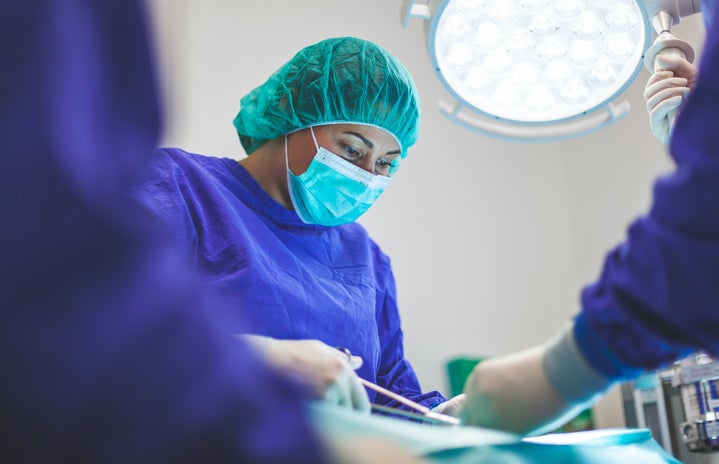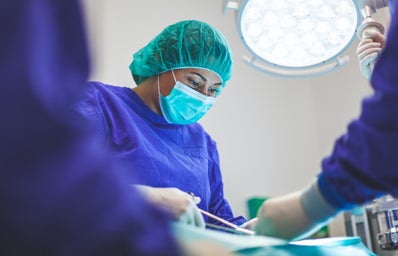An extensive part of being a student in the 21st century is that we get to experience the wonders of technology as they develop. Knowing that we have resources available to research, and further understand the importance of information as we have it. But what about back when we didn’t have resources such as the internet, or fancy medical tools and robots to assist us? When we look into the evolution of the most common plastic surgery procedures such as Rhinoplasties and Tissue augmentations, we still don’t understand how surgeons back in the day completed them, and even if it was a trial and error based study, it provided modern-day surgeons with a new frontier of opportunities and insight to surgery.
Beauty standards are taking a toll on populations everywhere, increasing the number of surgeries people have done just to “rectify” a piece of their body that they feel should change. The most common of these surgeries is the Rhinoplasty (rhin- nose/o/ plasty- surgical repair.) Even though it is considered a 20th-century modern procedure, the principle and theory for this surgery are derived from an Ayurvedic physician in India named Sushruta in the year 800 B.C.
Fascinatingly, Sushruta not only performed nasal reconstruction but also reconstructed earlobes and genitalia, most of the time when they come in the form of punishment, such as nasal defects that resulted from the mutilation of a criminal’s face, as a consequence of religious, political, or military punishment. Known as the “ancient Indian surgeon,” he proved his passion with well-deserved recognition by developing his most prominent surgical technique, the forehead flap rhinoplasty.
To this day, this procedure remains a contemporary plastic surgical practice, along with the otoplastic technique for reconstructing an earlobe with skin from the cheek. In Sushruta Samhita, he describes the free-graft rhinoplasty as written below:
“The portion of the nose to be covered should be first measured with a leaf. Then, a piece of skin of the required size should be dissected from the living skin of the cheek and turned back to cover the nose, keeping a small pedicle attached to the cheek. The part of the nose to which the skin is to be attached should be made raw, by cutting the nasal stump with a knife. The physician then should place the skin on the nose and stitch the two parts swiftly, keeping the skin properly elevated, by inserting two tubes of the castor-oil plant in the position of the nostrils, so that the new nose has a proper shape. The skin thus properly adjusted, it should then be sprinkled with a powder of licorice, red sandal-wood, and barberry plant. Finally, it should be covered with cotton, and clean sesame oil should be continually applied. When the skin has united and granulated, if the nose is too short or too long, the middle of the flap should be divided, and an endeavor made to enlarge or shorten it.” (Sushruta Samhita 1.16)
The Sanskrit text of ‘Sushruta Samhita’ was translated into Arabic by Ibn Abi Usaybia (1203–1269 AD)4. Curiosity sparked between surgeons of all countries, and procedures began to open, spreading the knowledge of Rhinoplasty from India to Arabia and Persia and from there to Egypt. Either way, it took centuries for the principles, theory, and technique of Rhinoplasty to travel to Europe and other parts of the world for everyone to learn.
The goal of the rhinoplasty, in the end, was that the amputated nose was not so disfigured as it would have been without any nose at all. The end product would not resemble a typical nose, but it resembled one enough that the patient would not stand out.
Regarding anesthesia, Sushruta wrote, “Wine should be used before the operation to produce insensibility to pain. The patient who has been fed does not faint, and he who is rendered intoxicated does not feel the pain of the operation.”
Modern medicine would not and still won’t be possible without anesthesia. European techniques used sponges soaked with opium and mandragora [from the mandrake plant] for surgical pain relief. In India Hashish, Wine, and Indian hemp were also commonly used as painkillers. But Sushruta used wine to make the patient “insensible” to pain.
Today, centuries later, there are many other surgeries in the contemporary world that are performed to improve breathing or damage while also enhancing and changing the aesthetics of the nose. When the concept of this surgery started, before it was popular, every surgery was performed to create a thin Caucasian nose. As cosmetic surgery has evolved alongside the growth and integration of multiple cultures, ethnicities, and nationalities, most surgeons now pay attention to the ethnicity of the patient. A nose that may be designed for a Caucasian face may not match a Latin or Hispanic face. Asian and African American faces have their unique beauty standards, and a good surgeon would respect those.
The famous Indian Rhinoplasty (reproduced in the October 1794 issue of the Gentleman’s Magazine of London) is a modification of the ancient surgery into a contemporary art form of reconstruction, This rhinoplasty described by Sushruta in 600 B.C. is a pedicle forehead flap is referred to as the “Indian flap.”
Medicine in ancient India evolved from Vedic medicine to Ayurvedic therapeutics. The physicians had varied social backgrounds and came from different social classes. No matter who, they were highly respected and honored, they were expected to uphold strict moral standards. Medical education was intensive and produced physicians like Sushruta, who were skilled in medicine and surgery. It also provided our century with insight into public health.


